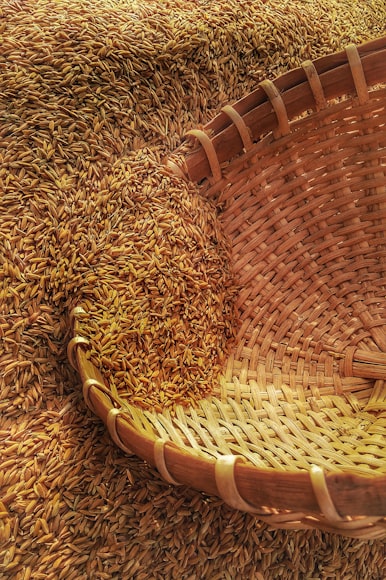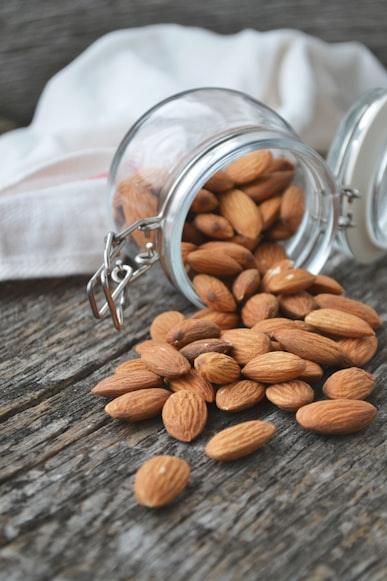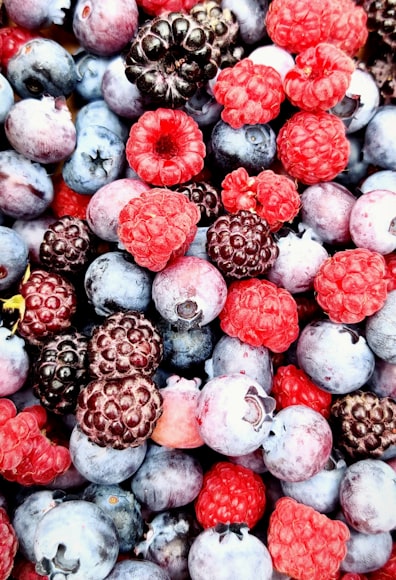As an Amazon Associate I earn from qualifying purchases.
What Do Baby Sparrows Eat?

The most numerous of North America’s 35 sparrow species is the house sparrow. It consumes a variety of grains and seeds, but during the summer, it will appreciate the protein in insects. The diet of a newborn sparrow is determined by what its mother and father feed it; where they reside has an impact on the available options.
If you’ve decided to pet a baby sparrow or found one that’s been orphaned by its parents, you may ask the question: what do baby sparrows eat? It only takes a little to raise a baby sparrow. A variety of foods can be offered to a baby sparrow, including cooked egg and dog or cat food. Baby sparrows may consume anything at any time. It is not difficult to care for a baby sparrow.
What Do Baby Sparrows Eat?
Sparrows, like many other songbirds, are omnivorous and can therefore eat both animals and plants. These largely vegetarian birds forage for food on the ground. This does not imply that they don’t utilize feeders. The list of sparrows’ regular diet is as follows:
Grains

Soybeans, white millet, rice, red millet, oats, wheat, barley, cracked corn, white proso milo, sorghum, and other grains are among their preferred foods. They prefer eating medium-sized cracked corn because of its tiny beaks. These grains can be given to your garden sparrows at home.
Seeds

Many plant and grass seeds are eaten by sparrows, which may be found in your yard or the garden. Striped sunflower seeds, black oil sunflower seeds, shelled safflower seeds, canary seeds, hard-shelled seeds, and nyjer seeds are just a few of the seed types that they consume.
Nuts

A wide range of nuts is a favorite food for sparrows, including peanuts, beechnuts, almonds, hickory nuts, Brazil nuts, and much more. These foods are high in protein and oil and are good for sparrows’ health. Unshelled nuts might be hazardous since they have tiny beaks.
Fruits

When fed as supplementary food, baby sparrows feed on fruit by pecking. When migrating in the fall, they usually consume a wide range of fruits. Many gardeners are unhappy with the many holes that various species of sparrows have made in their fruits. Apples, pears, grapes, cherries, plums, loquats, peaches, watermelon, and bananas are just a few of the fruits sparrows may consume. Make sure to chop fruits before feeding garden sparrows so that they may eat them. Sparrows can’t finish entire fruits on their own because of the small size of their mouths and stomachs.
Berries

Strawberries, blueberries, blackberries, baneberries, buffalo berries, bearberries, chokeberries, salmonberries, elderberries, raspberries, and other common fruits are all part of the baby sparrow’s occasional diet.
We recommend planting numerous fruit-bearing trees in your yard if you want to offer berry-eating sparrows a variety of berries. Chopped fruits in feeders are a must since sparrows use their tiny beaks to consume their snacks.
Vegetables

Vegetables are eaten by birds in a similar way to how humans do. Sparrows consume a variety of veggies, including potatoes, lentils, peas, tomatoes, and lettuce. In general, they avoid consuming these items. When their food supply is low, sparrows eat vegetables to survive.
Make sure you chop your veggies into tiny pieces for your sparrows to swallow easily if you offer them some food from your kitchen. To allow a wide range of sparrows access to the water, place a bowl of water in your yard.
Insects

Sparrows consume a wide range of tiny invertebrates, including caterpillars, bees, aphids, and ants, particularly during the spring and early summer. They eat these creatures primarily to feed their young. When the youngsters leave the nest, they return to eating grains and seeds.
Plants

Baby sparrows are mostly interested in the seeds of numerous trees and grasses, although they will occasionally consume leaves and grass. Sparrows must consume vegetation in the wild to survive if they don’t discover enough seeds to satiate their hunger.
Plants sparrows eat include ragweed, buckwheat, crabgrass, and a variety of buds and blooms. If you want to encourage them to consume plants, these plants should be accessible in your yard. Aside from that, insecticide applications in the grass are not recommended.
Human Food
Sparrows may consume a variety of human foods, such as bread crumbs and fried chips. If you’re willing to offer sparrows some bread crumbs, make sure they’re wet for a while before putting them in the water. The dried breadcrumbs are indigestible to sparrows.
Nestlings will not consume bread crumbs even after they have been soaked in water. The food will not be able to fit into their tiny stomachs. Adult sparrows should never receive old bread crumbs since their stomachs could become upset.
Scraps
Many varieties of sparrows eat food that has been tossed aside by people. They may be discovered around leftovers in the kitchen or dining room. Scavenging for meals, they may be found in garbage cans or dumpsters.
Keep your kitchen waste uncovered to allow a wide range of sparrows to consume from it. This has several advantages, as we all know that birds are excellent natural pest controllers. Sparrows will keep your environment clean by consuming the scraps, as we all know.
What Do Baby Sparrows Eat in The Wild?
A baby sparrow, on the other hand, only eats whatever his parents feed him. This means he’s eating the same things as his family does. The house sparrow is a flexible eater who will eat anything that is accessible. In the winter, he’ll fill his belly with acorns and other nuts. In the summer, he’ll eat caterpillars and grasshoppers. Other sparrows forage on the ground in search of seeds and insects during the summer, such as field sparrows. The parents regurgitate their meal discoveries to feed their young.b
How To Feed Baby Sparrows?

You may learn how to care for a newborn Sparrow if you’ve discovered one. However, observe the area carefully before taking action to ensure that the bird is an orphan. Hand-reared birds have a poor survival rate, so their best chance of survival is in the nest under parental monitoring.
Step 1
Start by feeding the baby bird with a wet mixture of puppy or cat food. Before combining it with the food, add a baby bird formula or Pronutro to the water. Puppy or cat canned food has a greater protein content and is closer to the natural diet than adult dog canned food. In a mixing glass, combine the food. If the bird is too young to feed itself, break off tiny bits and tweeze feed it with your finger.
Step 2
Add as many insects as you can to the cat or dog food. A natural diet for a baby sparrow consists of dry foods such as seeds and seeds, as well as live invertebrates including spiders, aphids, snails, caterpillars, and other small invertebrates. Young birds prefer feeding their young with live food rather than dried-up items.
Do not give captive baby sparrows earthworms. It’s harmful to birds to have earthworms because they contain something poisonous. Instead, try providing the tiniest crickets. You might also consider offering whole insects, such as those sold for reptiles like bearded dragons, as a food option. For supplies, check your local pet shop.
Another alternative is to sell clean white maggots, which can be found in fishing shops. Once again, the maggot should only be fed when its stomach is devoid of food. Because the black line in a maggot’s belly indicates where he has eaten, wait until this line disappears before feeding the baby bird.
Step 3
Combine live foods with a vitamin and mineral supplement to ensure that your pet gets all of the essential nutrients. Supplements such as Nutrobal or Cricket Diet Calcium Paste, which are available from pet retailers, can help guarantee balanced nutrition if the live food is insufficient.
Step 4
Repot the sparrow every few weeks. Feed the bird on a regular basis. Place food on tweezers straight into the sparrow’s open beak, or in a shallow dish if it is old enough. It takes around two weeks for a newborn sparrow to develop robust enough to feed himself.
If the bird is tiny and has few feathers, feed it every half hour. Feed the animal if it’s older. When hungry, the bird will chirp and yawn, and when full, it will cease eating.
Step 5
Offer the bird some water in a budgie sipper bottle, but only after it has accepted the drink. Young birds are poor drinkers from a short container. This is likely to result in water intoxication.
Step 6
When you’re feeding the bird as it gets bigger, change the food you give it. Continue to feed the wet dog or cat food when the baby is young, but add a variety of different foods for the bird to select from as it grows older. When a young bird is strong enough to feed itself, it no longer needs a wild bird seed feeder. Place the seed in a shallow dish so that the bird may begin feeding as soon as possible.
What Are The Natural Predators of Baby Sparrows?
House sparrows are relatively safe from predators since they prefer to nest in and around human dwellings. Crows, jays, grackles, and certain tiny raptor species may eat house sparrow eggs, hatchlings, and adults. House sparrows are attacked by gray and red squirrels. However, domestic cats are the main predators of adult house sparrows.
The House Sparrow is a dangerous, invasive species that may be found almost everywhere on the planet. Their aggressiveness toward other birds, propensity to form defensive flocks, capacity to reproduce rapidly, appetite for a variety of foods, and nesting close to humans have aided them in spreading across almost all of Earth’s continental regions. According to certain data, house sparrow populations appear to be declining, but it is anticipated that they will continue to be a common and abundant species throughout their current territories.
House sparrows are hunted and fed upon by a variety of owls and hawks. Cooper’s hawks, snowy owls, merlins, eastern screech owls, and many other species are among them. Cats, raccoons, domestic dogs, and many other animals are predators of nesting youngsters or eggs. House sparrows avoid being spotted and eaten by foraging in groups of two to ten individuals, which offers a lot of eyes to keep an eye out for predators.
How To Protect Baby Sparrows From Predators?
To keep birds safe, keep cats indoors as much as possible. If your cat goes outside, attach a bell strap to them as a warning to avians or try not to let them out during the morning peak feeding time. If they bring home a bird, do not praise the cat or give them treats since this will be regarded as an indication that they should make you happy again. Do not offer food to strays that hang around in your yard and eat birds.
When dogs are allowed outside, keep an eye on them to guard against any potential bird harm. If your dog brings you a bird, don’t give him a pat on the back.
Keep feeders at least 10-12 feet from shrubs and natural cover to prevent birds from colliding with windows. Also, keep bird feeders at least 10-12 feet away from bushes or other natural coverage. It also allows birds to keep an eye out for predators who may be hiding in the trees or shrubs. It also offers a secure refuge that is close enough for birds to flee to if they detect danger.
Are Baby Sparrows Healthy To Eat?
The flesh of every bird is comparable to chicken or a turkey, so eating just about any bird is deemed safe. However, whether these birds are feeding on clean food must be considered. The majority of sparrows are discovered trapped in rubbish, searching for nourishment.
Because sparrows aren’t particularly clean, you can’t go out and capture one off the streets or in your backyard since you don’t know where they’ve been and what they’ve eaten. They could even be infested with disease!
You may also collect and maintain a few of them in cages, which will allow you to watch what they eat and give them the appropriate nutrients. But eating sparrow meat is a lot of effort for little pleasure.
Amazon and the Amazon logo are trademarks of Amazon.com, Inc, or its affiliates.

